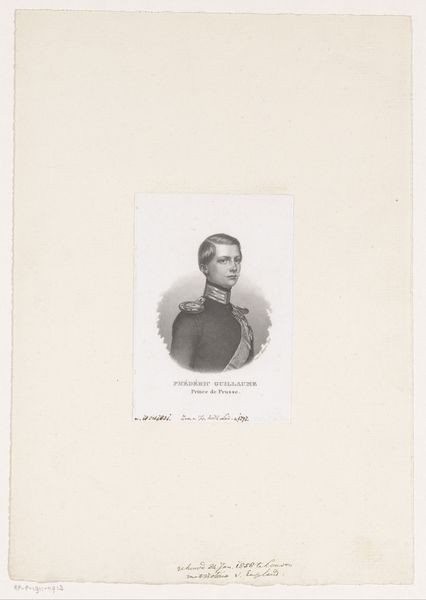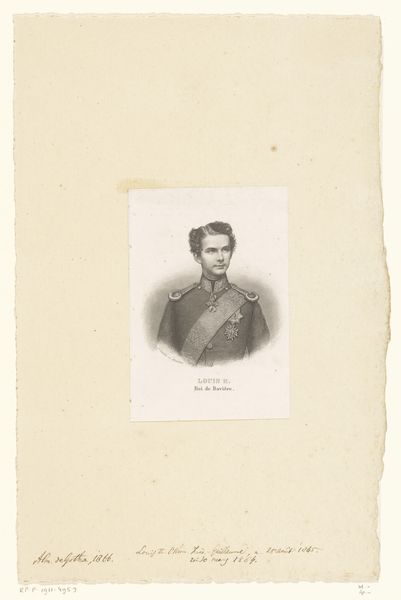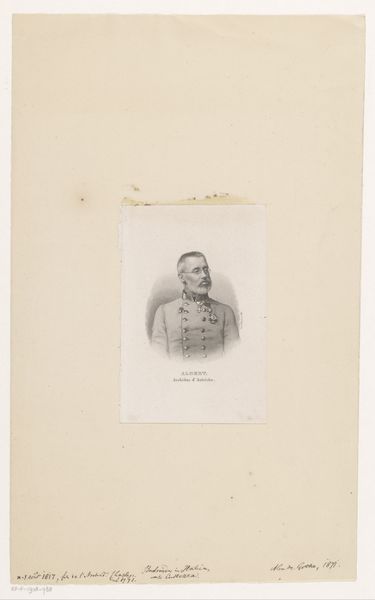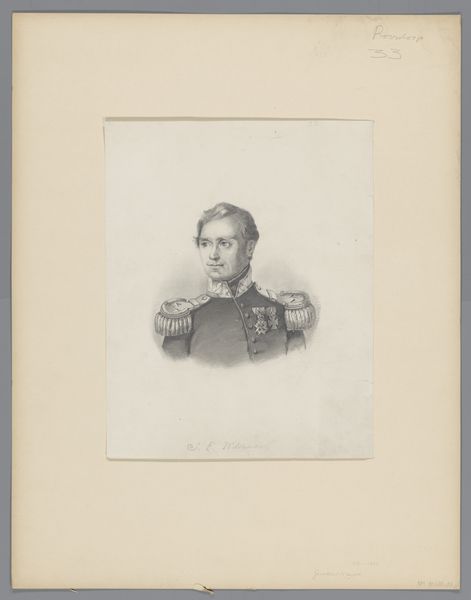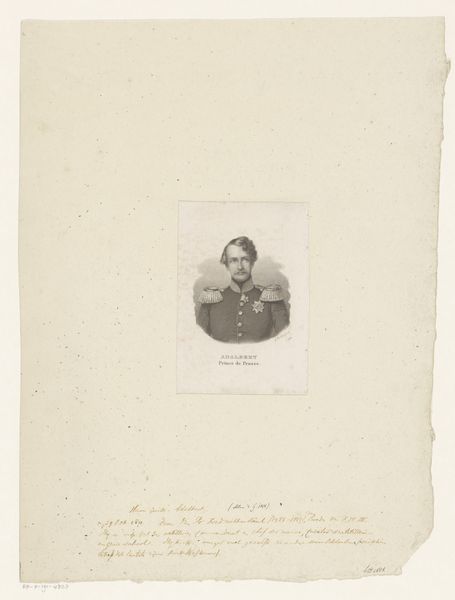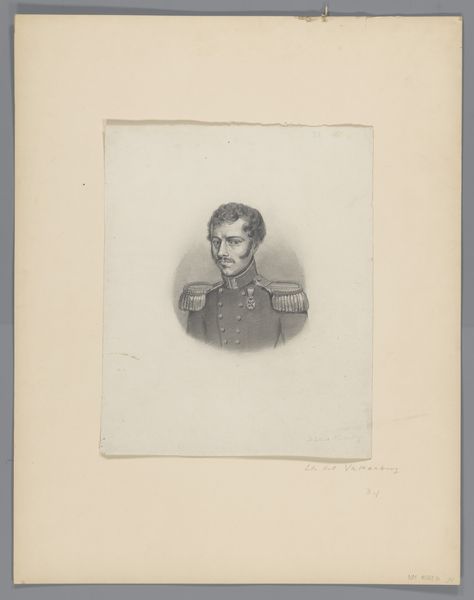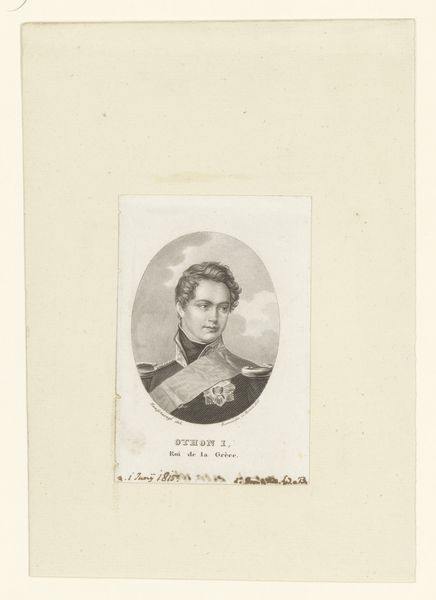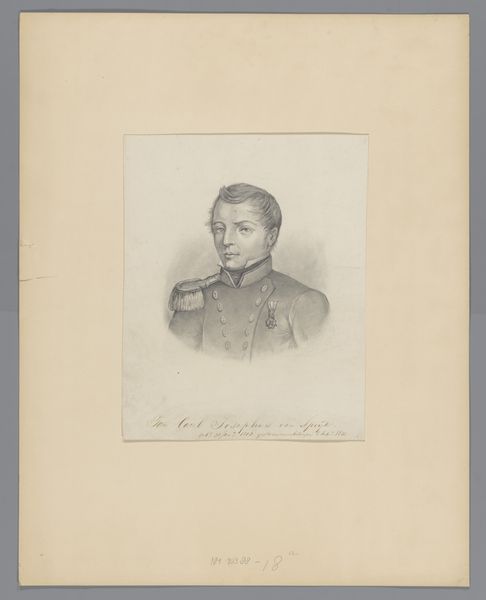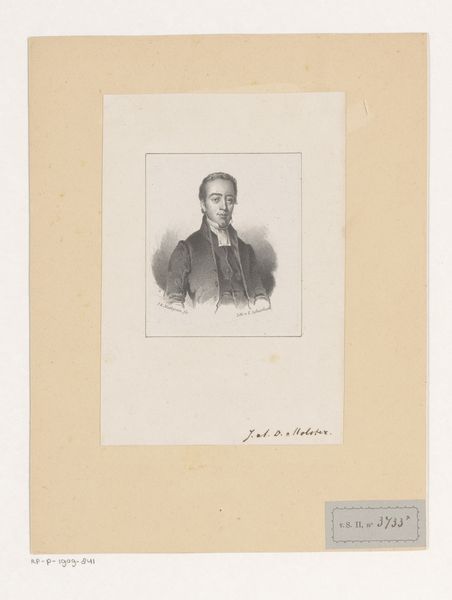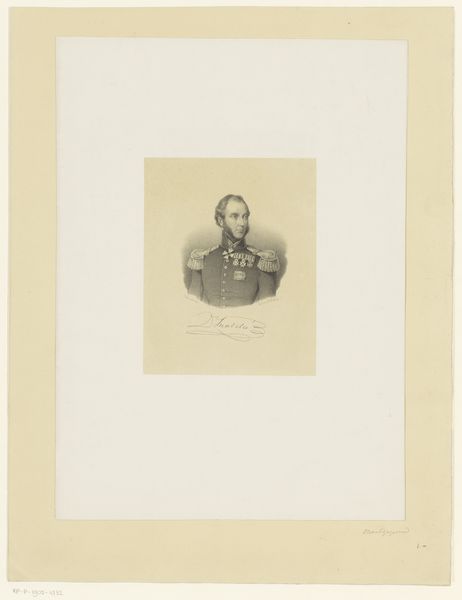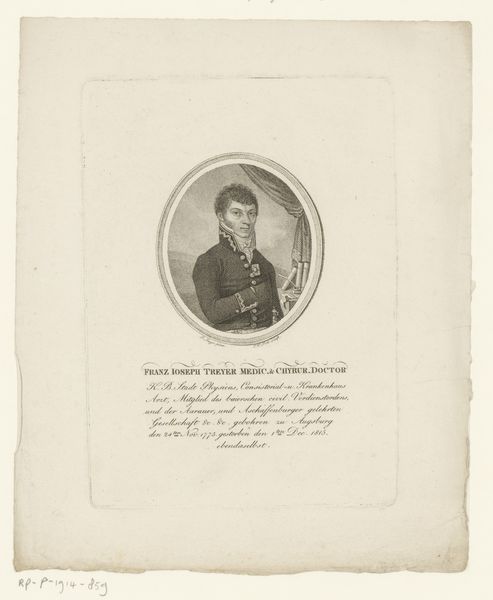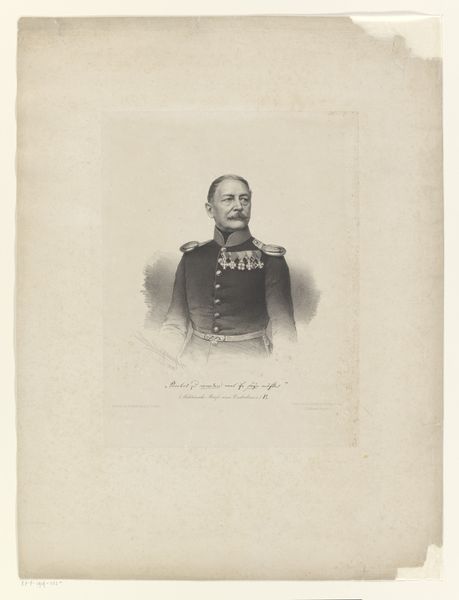
lithograph, print
#
portrait
#
neoclassicism
#
lithograph
# print
#
academic-art
Dimensions: height 108 mm, width 74 mm
Copyright: Rijks Museum: Open Domain
Curator: Here we have Carl Mayer’s lithograph, "Portrait of Franz Joseph I of Austria," created sometime between 1830 and 1868. What are your first impressions? Editor: Remote. Distant. Pomp without circumstance. He looks almost…sad, as if even *he* doesn't believe his own press. And it's achromatic to a fault. Like faded glory, you know? Curator: The academic style and the neoclassical influences, so prominent here, served very specific functions. Lithography made portraits more accessible to the masses, disseminating power by making the emperor’s image widely available. Editor: Democratizing absolutism. The ultimate contradiction. You have this nascent mass medium serving as the perfect propaganda vehicle for a guy whose entire raison d'etre was the preservation of traditional hierarchies! The irony just drips from the print, doesn't it? It feels almost quaint now, in a world drowning in digital imagery, to see the same mechanisms at work using new means and updated symbols. Curator: It certainly invites us to reflect on how rulers sought to project authority, in this case through meticulously controlled public image, from the age of print to today’s digital landscape. Editor: Right. He’s so deliberately…neutral, projecting a manufactured air of steady strength. It almost backfires, don't you think? Reveals just how self-conscious power can be, and how much energy it takes to maintain the facade. Makes you wonder what he was *really* like. Maybe melancholic! Curator: And the meticulous detailing typical of academic art served to ennoble the subject, creating a visual rhetoric of stability and permanence, crucial during a time of revolution and social upheaval across Europe. Editor: Ultimately, this portrait whispers a quiet story of control, both the control the emperor wanted to wield and the constraints of being a symbol, a carefully constructed image for public consumption. Curator: Indeed. An image caught between technological advancements and established modes of governance, still echoing into our times.
Comments
No comments
Be the first to comment and join the conversation on the ultimate creative platform.
